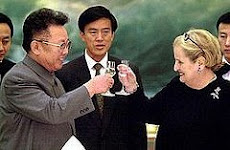Analysts around the world agree that the world's largest trade agreement will further elevate China's political and economic influence in the region. The RCEP covers a market of 2.2 billion people and $26.2 trillion of global output which accounts for about 30% of the population worldwide, as well as the global economy. The deal is a geopolitical victory for China at a time when the U.S. appears tp be retreating from Asia-Pacific given President Trump's "America First" foreign policy. It is also not clear whether the U.S. will negotiate any mega trade deals with economies in the region under President-elect Joe Biden.
Analysts argue that the mega deal achieves several things against the backdrop of rising U.S.-China tensions and worries about de-globalization:
- It shows that East Asia is very much open for business and recognizes the economic benefit of deeper trade integration.
- It reduces the perception that China is turning more inward with its dual circulation strategy, which emphasizes its domestic market.
- It signals that when it comes to economic policy, Asia-Pacific economies don't want to choose between the U.S. and China.
The RCEP was launched in 2012 at a time when talks for the Trans-Pacific-Partnership (TPP) led by the Obama administration were underway. Given China's absence in the TPP, many observers considered the RCEP as Beijing's counter to American influence in Asia-Pacific. But Trump pulled the U.S. out of the TPP in 2017 and proceeded to slap tariffs on several American trading partners for what he said were unfair trade practices. The remaining 11 countries went on to renegotiate and now signed the Regional Comprehensive Economic Partnership with China, excluding and leaving the United States as the temporary loser in the region.
Jan Mueller

No comments:
Post a Comment